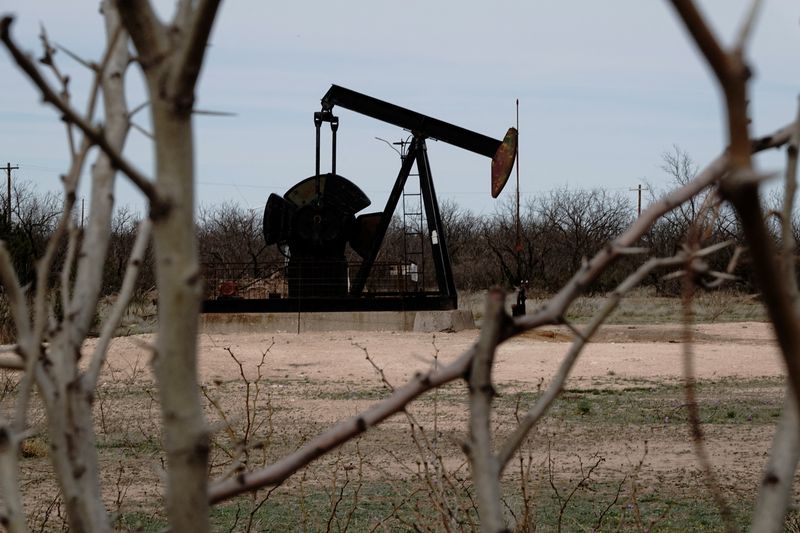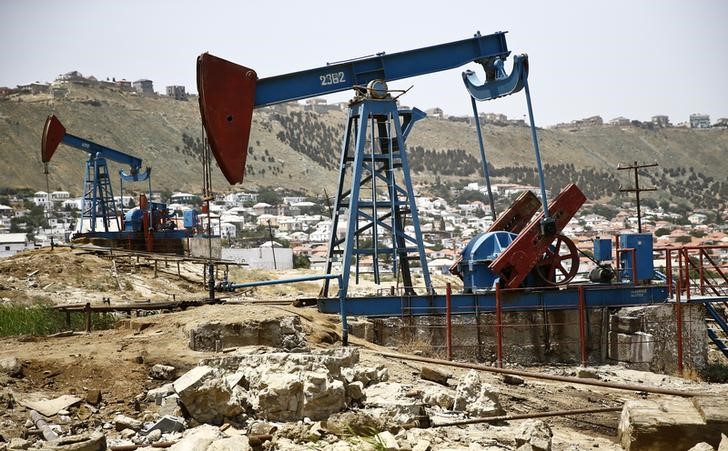By Georgina McCartney
(Reuters) – Oil prices edged lower on Friday but posted gains for a second straight week, supported by a U.S. interest rate cut and a dip in U.S. supply.
futures fell 39 cents, or 0.52%, to $74.49 a barrel. U.S. WTI crude futures fell 3 cents, or 0.4%, to $71.92.
Signs of a slowing economy in China, the major commodity consumer, put a ceiling on prices. But this week, both benchmarks rose more than 4%.
Prices have recovered after Brent fell below $69 for the first time in almost three years on September 10.
“The market concluded that a level below $70, combined with hedge funds having record weak belief in higher crude oil and fuel product prices, would require a recession to be justified, a risk that this week’s massive US interest rate cut helped mitigate said Ole Hansen. head of commodity strategy at Saxo Bank, said.
Prices rose by more than 1% on Thursday, a day after the US central bank’s decision to cut interest rates by half a percentage point.
Rate cuts tend to boost economic activity and energy demand, but some analysts are concerned about weakness in the U.S. labor market.
“US rate cuts have supported risk sentiment, weakening the dollar and supporting crude oil this week,” said Giovanni Staunovo, analyst at UBS.
“However, it will take some time for interest rate cuts to support economic activity and oil demand growth,” he added.
The Fed forecast another 50 basis points of rate cuts by the end of this year, a full percentage point of rate cuts next year and a further half percentage point cut in 2026.
“The Fed’s decision to cut rates and a hangover from Hurricane Francine are the only two things supporting the market right now,” said Tim Snyder, chief economist at Matador Economics.
“The thought of another 50 to 75 basis points gives markets hope for some degree of economic stability,” he added.
About 6% of crude production and 10% of production in the U.S. Gulf of Mexico were offline in the wake of Hurricane Francine, the U.S. Bureau of Safety and Environmental Enforcement said Thursday in its latest update on the storm.
Additional support for oil prices came from a drop in inventories to a one-year low last week. [EIA/S]
Rising tensions in the Middle East, which increased the risk of supply disruption, further boosted the oil market. Israel announced Friday that it has killed a top Hezbollah commander and other senior figures in the Lebanese movement in an airstrike on Beirut, as fears of a wider war grow.
Still, US President Joe Biden said reaching a ceasefire in Gaza remains realistic, telling reporters: “We have to stick to it.”
In China, refinery output slowed for a fifth straight month in August and industrial production growth reached the lowest level in five months.

China also issued its third and likely final set of fuel export quotas for the year, keeping volumes in line with 2023 levels. “This move signals that refineries’ margins are too weak to justify the increased activity,” it said StoneX analyst Alex Hodes in a note Friday.
Meanwhile, oil refineries in Asia, Europe and the US are facing a drop in profitability to the lowest level in several years.


